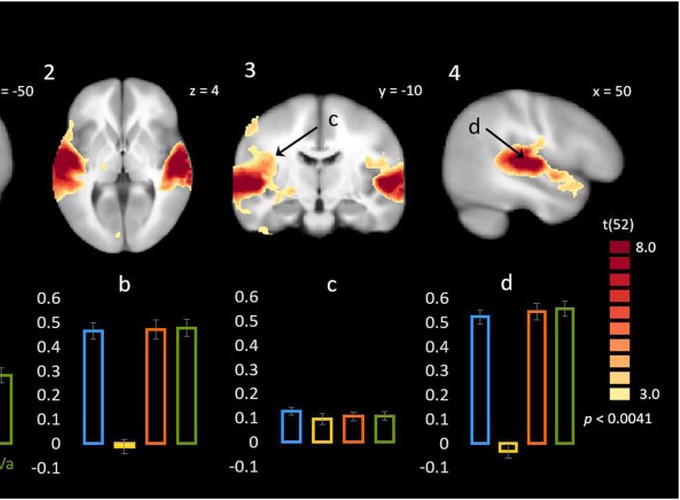Neural correlates of multisensory enhancement in audiovisual narrative speech perception: A fMRI investigation

Neural correlates of multisensory enhancement in audiovisual narrative speech perception: A fMRI investigation
Abstract
This fMRI study investigated the effect of seeing articulatory movements of a speaker while listening to a naturalistic narrative stimulus. It had the goal to identify regions of the language network showing multisensory enhancement under synchronous audiovisual conditions. We expected this enhancement to emerge in regions known to underlie the integration of auditory and visual information such as the posterior superior temporal gyrus as well as parts of the broader language network, including the semantic system. To this end we presented 53 participants with a continuous narration of a story in auditory alone, visual alone, and both synchronous and asynchronous audiovisual speech conditions while recording brain activity using BOLD fMRI. We found multisensory enhancement in an extensive network of regions underlying multisensory integration and parts of the semantic network as well as extralinguistic regions not usually associated with multisensory integration, namely the primary visual cortex and the bilateral amygdala. Analysis also revealed involvement of thalamic brain regions along the visual and auditory pathways more commonly associated with early sensory processing. We conclude that under natural listening conditions, multisensory enhancement not only involves sites of multisensory integration but many regions of the wider semantic network and includes regions associated with extralinguistic sensory, perceptual and cognitive processing.